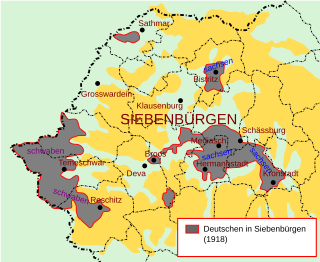 W
WTransylvanian Saxon is the German dialect of the Transylvanian Saxons.
 W
WThe Transylvanian Saxons are a people of German ethnicity who were settled in Transylvania in waves starting from the mid 12th century until the late Modern Age. The Transylvanian "Saxons" originally stemmed from Flanders, Hainaut, Brabant, Liège, Zeeland, Moselle, Lorraine, and Luxembourg, then situated in the north-western territories of the Holy Roman Empire around the 1140s.
 W
WJohann Michael Ackner was a Transylvanian archaeologist and nature researcher.
 W
WJohann Heinrich Alsted, "the true parent of all the Encyclopædias", was a German-born Transylvanian Saxon Calvinist minister and academic, known for his varied interests: in Ramism and Lullism, pedagogy and encyclopedias, theology and millenarianism. His contemporaries noted that an anagram of Alstedius was sedulitas, meaning "hard work" in Latin.
 W
WGeneraloberst Arthur Freiherr Arz von Straußenburg was an Austro-Hungarian colonel general and last Chief of the General Staff of the Austro-Hungarian Army. At the outbreak of the First World War, he commanded the 15th Infantry Division. Soon, he was promoted to the head of the 6th Corps and the First Army. He participated on the Gorlice–Tarnów Offensive in 1915 and the countryside of Romania in 1916. In March 1917, he became Chief of the General Staff until his resignation on 3 November 1918.
 W
WBálint Bakfark was a Hungarian composer of Transylvanian Saxon origin, and lutenist of the Renaissance. He was enormously influential as a lutenist in his time, and renowned as a virtuoso on the instrument.
 W
WReinhold Batschi OAM is a former Romanian rower and leading Australian rowing coach. He was the inaugural Head Coach of the Australian Institute of Sport's rowing program and Head Coach of the Australian Olympic rowing teams from 1980 to 2000.
 W
WWaldemar Edler von Baußnern was a German composer and music teacher.
 W
WWilhelm Georg Berger was a Romanian composer, musicologist, violist and conductor.
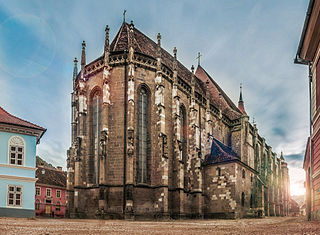 W
WBiserica Neagră or Black Church ; is a church in Brașov, a city in south-eastern Transylvania, Romania. It was built by the German community of the city and stands as the main Gothic style monument in the country, as well as being the largest and one of the most important Lutheran places of worship in the region.
 W
WFreiherr (Baron) Samuel von Brukenthal was the Habsburg governor of the Grand Principality of Transylvania between 6 July 1774 and 9 January 1787. He was a personal advisor of Empress Maria Theresa.
 W
WOscar Walter Cisek was a Romanian writer, diplomat, and art critic, who authored short stories, novels, poems and essays in both German and Romanian.
 W
WArthur Coulin was an Austro-Hungarian Romanian painter and art critic.
 W
WMargarete Depner was a Romanian sculptor, painter and illustrator of Transylvanian Saxon ancestry. Born in Braşov in 1885, she died in 1970 in the same city. In 1931, she studied at the Berlin studio of Josef Thorak.
 W
WThe Diploma Andreanum, or Goldener Freibrief der Siebenbürger Sachsen, was issued by Andrew II of Hungary in 1224, granting provisional autonomy to colonial Germans residing in the Siebenbürgen region of the Kingdom of Hungary.
 W
WBernd Fabritius is a German politician of the Christian Social Union of Bavaria (CSU). From 2013 to 2017, he served as a Member of the Bundestag. He was defeated in the 2017 federal election.
 W
WCarl Filtsch was a Transylvanian pianist and composer. He was a child prodigy, and student of Frédéric Chopin.
 W
WFranz Friedrich Fronius (1829–1886) was a Transylvanian-Saxon botanist, ethnologist, and Lutheran cleric from Schäßburg.
 W
WHans Fronius was an Austrian painter and illustrator.
 W
WMarcus Fronius was a Lutheran theologian, pedagogue, and author whose published works covered topics such as theology, metaphysics, and humoural physiology.
 W
WMatthias Fronius was a Lutheran cleric and Stadtrichter in Kronstadt, Siebenbürgen, where he was born and died. He was the author of Statuta Jurivm Municipalium Saxonum inn Transylvania, a 16th-century codification of Transylvanian law that incorporated legal principles established by both Roman and Anglo-Saxon law.
 W
WArnold Graffi was a pioneering German doctor in the area of experimental cancer research.
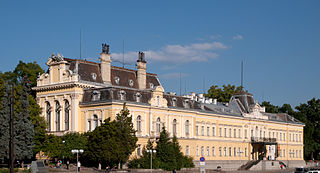 W
WFriedrich Grünanger was a Transylvanian Austrian architect who worked primarily in Bulgaria.
 W
WRalph Gunesch is a German former professional footballer who played as a centre-back.
 W
WRoland Gunnesch is a retired Romanian handball player of German ethnicity. During his career he earned 170 caps with the national team and scored 252 goals, winning the world title in 1970 and 1974 and Olympic medals in 1972 and 1976.
 W
WConrad Haas (1509–1576) was an Austrian or a Transylvanian Saxon military engineer from the Kingdom of Hungary, Transylvania. He was a pioneer of rocket propulsion. His designs include a three-stage rocket and a manned rocket.
 W
WGáspár Heltai was a Transylvanian Saxon writer and printer. His name possibly derives from the village Heltau. Despite being a German native speaker he published many books in Hungarian from his print-shop. The brother of his son-in-law was Ferenc Dávid, Nontrinitarian and Unitarian preacher and the founder of the Unitarian Church of Transylvania.
 W
WSteve Holmes is a Romanian-born German pornographic actor, producer, and director. He has received several adult industry awards, including the AVN Award for Male Foreign Performer of the Year in 2005 and 2006. In 2017, Holmes was inducted into the AVN Hall of Fame.
 W
WJohann Martin Honigberger was an Imperial Austrian physician and traveller. He travelled through Asia to India and wrote a book on his experiences in the east. A novel based on his life, written by Mircea Eliade in 1940, The Secret of Dr. Honigberger, became popular.
 W
WJohannes Honter was a Transylvanian Saxon, renaissance humanist, Protestant reformer, and theologian. Honter is best known for his geographic and cartographic publishing activity, as well as for implementing the Lutheran reform in Transylvania and founding the Evangelical Church of Augustan Confession in Romania.
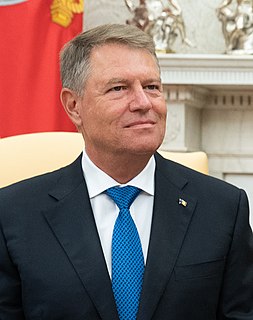 W
WKlaus Werner Iohannis is the president of Romania. He became leader of the National Liberal Party (PNL) in 2014, after having served as leader of the Democratic Forum of Germans in Romania (DFDR/FDGR) from 2002 to 2013. Iohannis was a physics teacher and a school inspector before entering full-time politics.
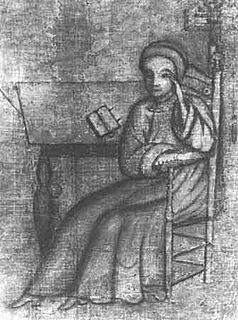 W
WJohannes Kelpius was a German Pietist, mystic, musician, and writer, interested in the occult, botany, and astronomy, who came to believe with his followers in the "Society of the Woman in the Wilderness" that the end of the world would occur in 1694. This belief, based on an elaborate interpretation of a passage from the biblical Book of Revelation, anticipated the advent of a heavenly kingdom somewhere in the wilderness during that year. Kelpius felt that the seventeenth-century Province of Pennsylvania, given its reputation for religious toleration at the edge of a barely settled wilderness, was the best place to be. Philadelphia had been founded in 1682, but the city and the Province of Pennsylvania had quickly become a tolerant haven and refuge for many pietist, communitarian, or free-thinking groups who were leaving the Old World for the congenial religious climate of the British colony. Kelpius and his followers crossed the Atlantic and lived in the valley of the Wissahickon Creek in Philadelphia from 1694 until his death. It is reported that they lived communally, though they also spent time in solitary meditation in caves and small cells scattered about their common living quarters. Though no sign or revelation accompanied the year 1694, the faithful, known as the Hermits or Mystics of the Wissahickon, continued to live in celibacy, searching the stars and hoping for the end.
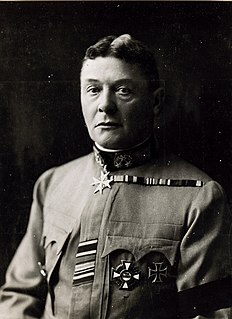 W
WHermann Albin Josef Freiherr Kövess von Kövessháza was the final, and completely ceremonial, Commander-in-Chief of the Austro-Hungarian Army. He served as a generally competent and unremarkable commander in the Austro-Hungarian Army and was close to retirement in 1914 when the First World War broke out and he was given a command post.
 W
WPeter Alexander Makkay, known as Peter Maffay, is a Romanian-born German musician, singer, and composer.
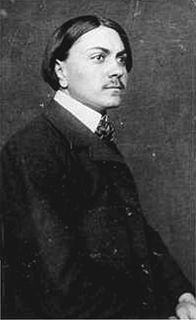 W
WJános Mattis-Teutsch or Máttis-Teutsch, Mátis-Teutsch was a Hungarian painter, sculptor, graphic artist, art critic, and poet. Best known for his Seelenblumen ("Soulflowers") cycle of paintings, he was an important contributor to the development of modern art and avant-garde trends inside Romania. He was the grandfather of the artist Waldemar Mattis-Teutsch.
 W
WGeorg Maurer was a German poet, essayist, and translator. He wrote under the pseudonyms Juventus, murus, and Johann Weilau.
 W
WMichael Friedrich Benedikt Baron von Melas was a Transylvanian-born field marshal of Saxon descent for the Austrian Empire during the Napoleonic Wars.
 W
WRudolph Friedrich Miess was an Imperial Austrian-born Romanian painter from the Transylvania region. Although he did numerous portraits, he is best known for his landscapes, which combine the Academic and Impressionist styles.
 W
WHermann Julius Oberth was an Austro-Hungarian-born German physicist and engineer. He is considered one of the founding fathers of rocketry and astronautics, along with the French Robert Esnault-Pelterie, the Russian Konstantin Tsiolkovsky, and the American Robert Goddard.
 W
WOskar Pastior was a Romanian-born German poet and translator. He was the only German member of Oulipo.
 W
WHagen Rether is a Romanian-born German political cabaret artist and musician. The most remarkable features in his performance are usually the presence and use of a grand piano. He was a frequent contributor to the German Kabarett TV show Scheibenwischer.
 W
WStephan Ludwig Roth was a Transylvanian Saxon intellectual, teacher, pedagogue and Lutheran pastor.
 W
WJohann Georg Schwarz was a philosophy professor at Moscow University who headed the Russian branch of the Rosicrucian Society.
 W
WThe Lutheran Cathedral of Saint Mary is the most famous Gothic-style church in Sibiu, Transylvania, Romania. Its massive 73.34 m high steeple is a landmark of the city. The four turrets situated on top of the steeple were a sign to let foreigners know that the town had the right to sentence to death. It belongs to the Lutheran, German-speaking Evangelical Church of Augustan Confession in Romania.
 W
WSiebenbürglied (Transylvania song) is a regional anthem composed by Johann Lukas Hedwig with lyrics by Maximilian Leopold Moltke as a regional anthem for Transylvania Saxons. The anthem has been translated into both Hungarian by Ritoók János and Romanian by Dan Dănilă.
 W
WSoterius von Sachsenheim is a Transylvanian Saxon noble family originating from the village Stein, in the former Saxon Repser Stuhl administrative division. Among its members were politicians and bureaucrats in the Transylvanian state administration and also army officers, scholars, pastors and artists.
 W
WEdith Jeanette Soterius von Sachsenheim (1887–1970) was a Transylvanian Saxon painter, who spent part of her career in England and elsewhere in Europe.
 W
WThe surname Stamp is the anglicized version of the French family name, d'Étampes, which in turn is a locational derivation from Étampes, a community near Paris, France.
 W
WGeorg Daniel Teutsch was a Transylvanian historian and Lutheran bishop.
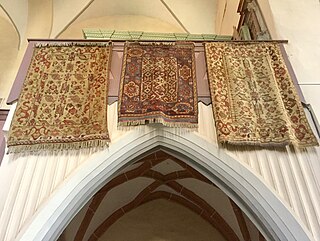 W
WThe name Transylvanian rug is used as a term of convenience to denote a cultural heritage of 15th–17th century Islamic rugs, mainly of Ottoman origin, which have been preserved in Transylvanian Protestant churches. The corpus of Transylvanian rugs constitutes one of the largest collections of Ottoman Anatolian rugs outside the Islamic world.
 W
WMichael Weiß was a Transylvanian Saxon politician and historian. He is mostly known for being the mayor of Kronstadt.
 W
WHeinrich Adalbert von Wlislocki was a Transylvanian linguist and folklorist.
 W
WAdele Zay was a Transylvanian teacher, feminist and pedagogue. Her family were part of the German-speaking community of the Kingdom of Hungary. Because of her father's death during her infancy, Zay's education was interrupted by periods where she taught to earn money in order to continue private and formal studies. In 1880 after studying abroad in Vienna and Gotha, she passed her primary education certification for Germany and Hungary. The following year, she was certified as a secondary teacher, becoming the first Transylvanian woman to have earned a higher education. From 1875 to 1884, she taught at the Institute of Irma Keméndy in Szeged.